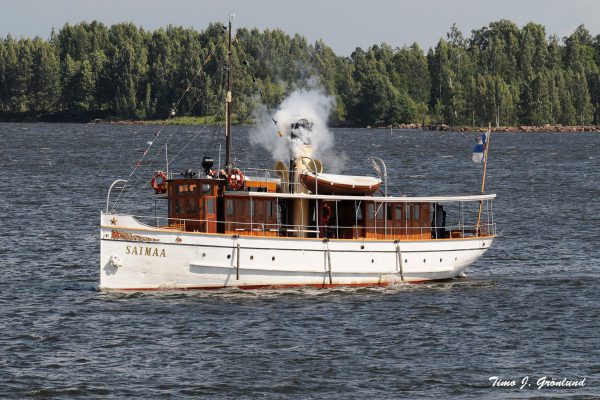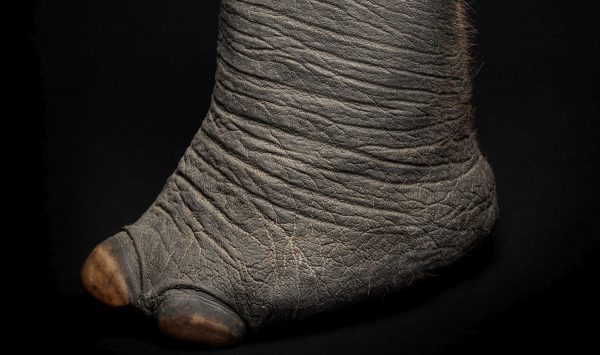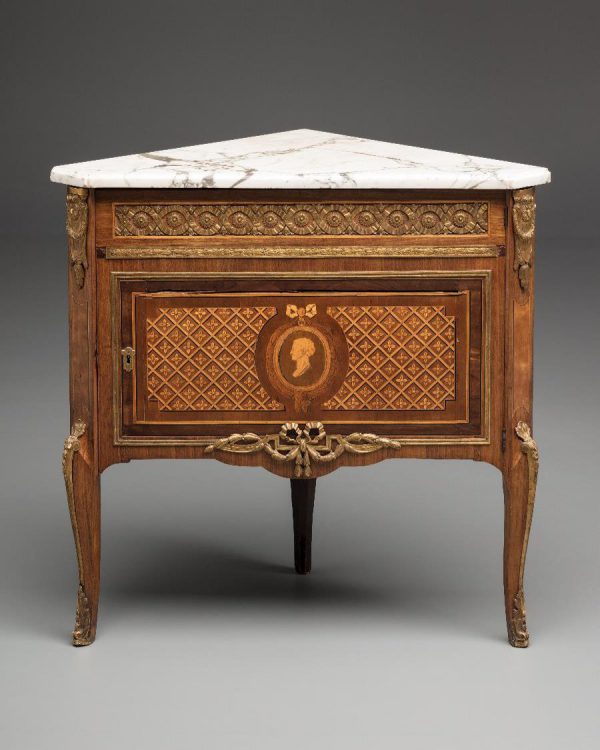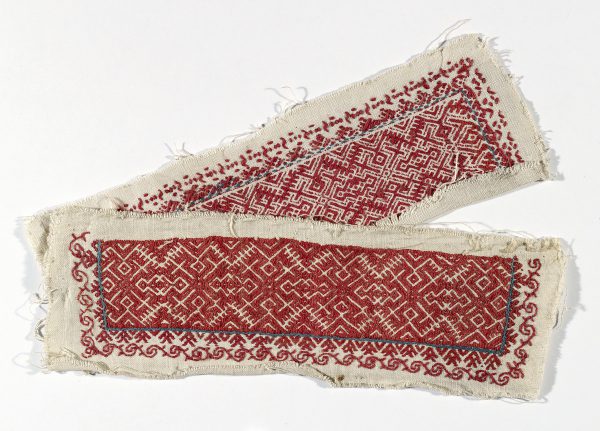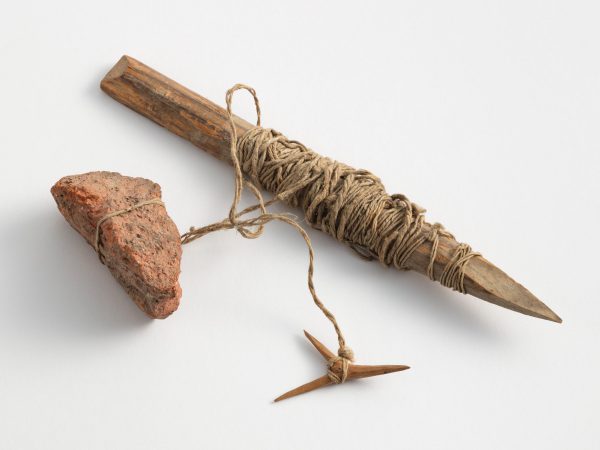The corner cabinet made by Georg Haupt
Artefact of the month - March 2024
One of the most significant acquisitions for the historical collections of the National Museum of Finland in recent years is the corner cabinet signed by Georg Haupt, purchased in 2023. This exceptionally fine Gustavian piece, manufactured in Stockholm in 1780, represents Haupt's late style at its best. Abundant gilded metal trims adorn the front of the cabinet, and on the cabinet door, amidst flower-patterned lozenges, there is a profile portrait of a man surrounded by a wreath. The top plate is made of Italian white marble with gray veins. Originally, the cabinet had an almost identical pair, which was destroyed in a fire in the 1960s.
Georg Haupt (1741–1784) is the highest-ranking and most famous of the Swedish cabinetmakers of the Gustavian era. Haupt received his journeyman's certificate in Stockholm in 1759 and became a wandering journeyman in 1763, during which he worked in the most important furniture production centers of that time, including Amsterdam, Paris, and London Upon returning to Stockholm, he was granted the title of royal carpenter in 1769. His masterpiece was a French-style writing desk commissioned for Queen Lovisa Ulrika, which is still located in Drottningholm Palace. In 1771, Haupt was granted a burghers certificate in Stockholm and established his own business by taking over a furniture workshop formerly owned by Andreas Fogel. During the operation of Haupt's workshop, 15 apprentices worked, with 11 of them completing their apprenticeships and four becoming guild masters. The most notable among them was Gustaf Adolph Ditzinger, who took over the workshop after Haupt's death and eventually married his widow, Sara Haupt.
Haupt's meticulously proportioned furniture is elegantly and tastefully designed, exhibiting a high level of technical craftsmanship. Characteristic of these pieces is the skillful use of intarsia, involving the intricate inlay of different-colored woods, as well as the abundant use of gilded brass ornaments.
The corner cabinet and its pair were commissioned by Count Carl Fredrik Scheffer (1715–1786), who served as Sweden's ambassador to Paris from 1743 to 1746. From 1756 to 1762, Scheffer acted as a tutor for Crown Prince Gustav (later King Gustav III) and his brothers, accompanying the Crown Prince on his journey to France in 1770. Scheffer supported Gustav III in his coup d'état in 1772 and served as an advisor to the king He was granted the title of chamberlain in 1741, privy councillor in 1746, and councillor of state in 1751. In 1753, Scheffer was elected as a member of the Royal Academy of Sciences, and in 1786, he became a member of both the Swedish Academy and an honorary member of the Royal Swedish Academy of Letters, History, and Antiquities. He also served as the chairman of the Royal Patriotic Society.
The corner cabinets were originally located in Tyresö Castle, owned by C. F. Scheffer, in Södermanland near Stockholm. The cabinets came into Finnish ownership in 1794 when Colonel and Governor, Count Robert Wilhelm de Geer (1750–1820), owner of Tervik Manor, acquired various shares of Tyresö as part of his wife's joint inheritance. de Geer sold Tyresö in 1800, and a substantial amount of the estate's personal property was brought to Finland.
In Finland, only a few pieces of Haupt furniture have been known historically. In the National Museum of Finland's collections, there is previously a writing bureau signed by Haupt in 1781, as well as a games table likely crafted by Gustaf Adolph Ditzinger between 1784 and 1788 in Haupt's workshop during Sara Haupt's ownership.
Jouni Kuurne


